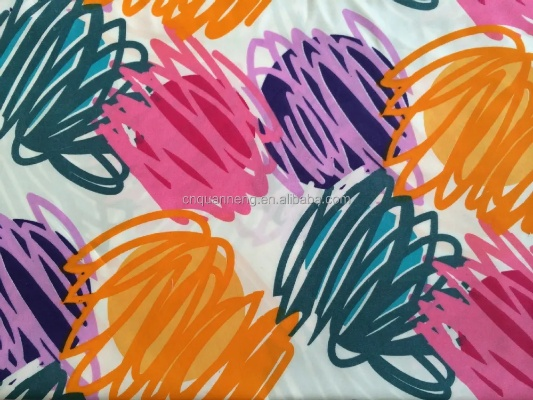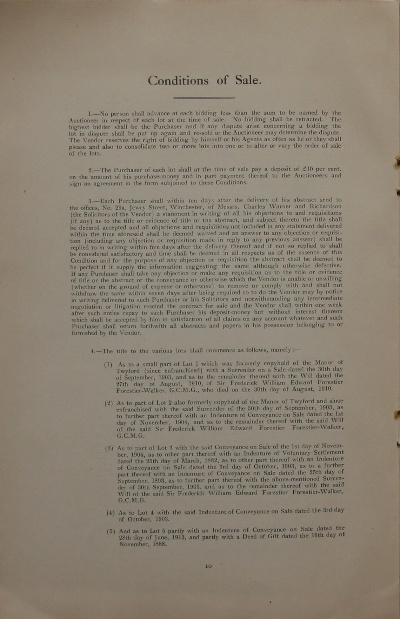Transforming Textiles for a Greener Future
: Textile Innovations for a Sustainable Future,Abstract:,The textile industry, one of the world's largest consumer goods producers, is facing challenges in terms of environmental impact and resource depletion. To address these issues, researchers and industry professionals are exploring innovative solutions that aim to transform traditional textile production methods into more sustainable practices. This paper discusses various approaches being adopted to reduce textile waste, improve energy efficiency, and promote biodegradable materials. The focus is on the development of eco-friendly dyes and finishes, the use of renewable energy sources in textile manufacturing, and the adoption of circular economy principles. The potential benefits of these innovations for both the environment and society are highlighted, emphasizing the urgent need for sustainable textile solutions to meet the demands of a greener future.

Introduction
In the world today, textiles are an essential part of our daily lives. They are used in clothing, furnishings, and even medical equipment. However, traditional textile production often involves extensive use of water, energy, and chemicals, which can have a significant impact on the environment. This is where the concept of "green textiles" comes into play. Green textiles are designed to be more sustainable, eco-friendly, and environmentally conscious than their conventional counterparts. In this article, we will explore how green textiles are revolutionizing the industry and creating a brighter future for all.
Green Textiles: The Future of Fashion
Green textiles are made from natural materials such as cotton, linen, wool, and hemp. These materials are grown without the use of harmful pesticides or fertilizers, making them healthier for both people and the planet. Additionally, they require less water and energy during production compared to synthetic fabrics. This makes green textiles an attractive option for consumers who prioritize sustainability.
One example of green textiles is organic cotton. Organic cotton is grown without the use of synthetic fertilizers or pesticides, ensuring that it is free from harmful chemicals. This makes it a safer choice for children's clothing, as it reduces the risk of exposure to toxic substances. Another example is bamboo fabric, which is made from renewable resources and requires less water and energy during production compared to traditional cotton.
Sustainable Production Methods
To make green textiles, manufacturers must adopt sustainable production methods. One way to achieve this is through the use of recycled materials. Recycled materials such as plastic bottles, old clothes, and scraps of fabric can be turned into new textiles. This not only reduces waste but also creates a circular economy, where materials are reused and repurposed.
Another method is through biodegradable dyes and finishes. These dyes and finishes are derived from natural sources such as plants or minerals, which decompose quickly and do not harm the environment. Biodegradable dyes are especially important in the fashion industry, where they can reduce the risk of toxic spills and other hazards associated with traditional dyes.
Market Trends and Economic Benefits
The market for green textiles is growing rapidly. According to a report by the Global Textile Industry Association, the global textile industry is expected to reach $1.5 trillion by 2025, with a significant portion of this growth coming from the green sector. This growth is driven by consumer demand for sustainable products, government regulations, and increased awareness about environmental issues.
In addition to economic benefits, green textiles offer numerous health and environmental advantages. For example, organic cotton fabric is hypoallergenic and reduces skin irritation, making it ideal for sensitive skin. Bamboo fabric is breathable, absorbs moisture effectively, and does not produce any odor, making it ideal for outdoor activities.
Conclusion

In conclusion, green textiles are transforming the fashion industry for the better. By using natural materials, sustainable production methods, and innovative designs, green textiles are creating a brighter future for all. As consumers become more aware of the environmental impact of their purchases, green textiles are becoming increasingly popular. It is up to us to continue pushing forward and making these products accessible to everyone. Let's work together to create a more sustainable and beautiful world for generations to come.
随着全球环境问题日益严重,环保纺织品已成为推动可持续发展的关键领域,环保纺织品不仅有助于保护环境,减少污染,还能为消费者带来健康、舒适和环保的生活方式,本篇文章将围绕环保纺织品创造辉煌这一主题展开讨论,并通过英文案例说明来进一步阐述其重要性。
环保纺织品的重要性
- 环境保护:环保纺织品通过减少资源消耗、降低碳排放和减少环境污染等方式,为保护地球家园做出了重要贡献。
- 健康舒适:环保纺织品采用天然材料,对人体无害,能够提供舒适、健康的生活体验。
- 推动经济发展:环保纺织品产业已成为全球经济增长的重要驱动力,为相关产业链的发展提供了广阔空间。
环保纺织品的创新发展
- 绿色材料创新:采用可再生、可降解、可持续的材料,如竹纤维、棉纤维等,减少对环境的污染。
- 功能性纺织品:开发具有抗菌、抗过敏、抗紫外线等功能的纺织品,满足消费者对健康舒适的需求。
- 绿色设计理念:注重生态设计,减少浪费和污染,注重产品的可回收和再利用。
案例分析
以下是一个具体的环保纺织品案例说明:
某知名品牌环保纺织品
该品牌采用天然纤维如竹纤维和棉纤维等环保材料,生产出了一系列具有抗菌、抗过敏、抗紫外线等功能的纺织品,这些纺织品不仅符合国际环保标准,而且具有舒适、健康的生活体验,该品牌的产品深受消费者喜爱,销售额逐年上升。
环保纺织品的推广应用
- 政府政策支持:政府出台了一系列环保政策,鼓励和支持环保纺织品的研发和生产。
- 消费者需求推动:随着消费者对健康、环保和生活品质的要求不断提高,环保纺织品市场需求不断增长。
- 企业合作共赢:企业之间加强合作,共同推动环保纺织品的研发和生产,实现共赢发展。
环保纺织品是推动可持续发展的关键领域,其创造辉煌的未来离不开政府政策支持、消费者需求推动和企业合作共赢,我们应该积极推广和应用环保纺织品,为保护地球家园做出更大的贡献,我们也应该加强环保纺织品的研发和生产,提高其质量和性能,满足消费者的需求,我们也应该加强国际合作,共同推动环保纺织品的研发和生产,实现全球可持续发展。
Articles related to the knowledge points of this article:
The Fabric of Innovation:A Look at Zeroths Exquisite Textiles
The Determining Factors of Textile Oil Content
Job Opportunities at Jieyang Textile Factory A Global Talent Landing Pad
The Fabric of Luxury:An In-depth Look at Shangbo Hotel Textiles
The Impact of the Pandemic on Global Textile Trade A Brief Analysis
Exploring the Legacy of Textiles in Shaoxing,Chinas Ancient Capital



